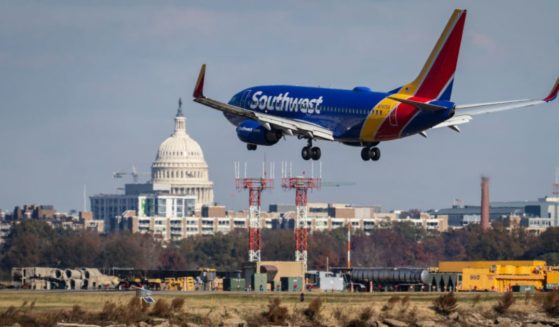Civilian Casualties in Afghanistan Spike to Near-Record Levels After Biden's Troop Withdrawal
A United Nations report released Monday revealed that the number of civilians killed and wounded in Afghanistan has surged by almost 50 percent over figures in the first half of 2020.
Approximately 1,659 people have been killed and 3,524 injured in the chaos threatening the country as non-government and government forces butt heads to determine the future of post-American Afghanistan, the report by the United Nations Assistance Mission in Afghanistan stated.
The numbers of casualties reported by UNAMA, a 47 percent increase over the first six months of last year, demonstrate what it says is a reversal in the trend of declining civilian casualties seen in the first six months of 2020.
Civilian casualties have risen up to “record levels seen in the first six months of 2014 to 2018,” the report stated.
The report also reported staggering, “record” numbers of casualties among women and children.
The number of civilian girls and women killed and wounded nearly increased by 100 percent from numbers in 2020’s first half, according to the report. The number of male child casualties rose by 36 percent, UNAMA reported.
In 2021, according to the report, 14 percent of civilian casualties were among women. Children of both sexes made up 32 percent of civilian casualties, the report stated.
Thirty-eight percent of all civilian casualties are caused by non-suicide improvised explosive devices. Thirty-three percent were caused by ground engagements with the responsibility for the casualties here attributed mostly to either the Taliban or the Afghan National Security Forces.
Fourteen percent were due to targeted killings and 8 percent were from airstrikes mostly attributed to the Afghan Air Force. The remaining 7 percent of civilian casualties were caused either by deadly remnants from war, such as unexploded ordinances, or other causes.
The U.N. political mission furthermore found the rate of new casualties in the country to be increasing since May, a month after U.S. President Joe Biden announced his intention to withdraw U.S. troops by the 20th anniversary of the September 11, 2001, terrorist attacks.
Biden would revise the withdrawal deadline later and make it August 31, 2021.
“Between 1 May and 30 June 2021, UNAMA recorded 2,392 civilian casualties, nearly as many as were documented in the entire four preceding months. The number of civilian casualties in May-June 2021 was the highest on record for those two months since,” the organization said in its report.
As of last Monday, the United States has “completed more than 95% of the entire withdrawal process,” according to the most recent CENTCOM update.
As the U.S. and other international forces leave the country, the Taliban has been increasing the territory under its control.
As of Monday, the Islamist insurgents hold about 53 percent of Afghanistan’s 421 districts, according to data gathered by the Foundation for Defense of Democracies.
About 26 percent of all Afghan districts are contested by Afghan forces and the Taliban, and only 17 percent of the districts are in the hands of the Kabul government.
The Afghan government and the Taliban engage in regular firefights to stop the other side from advancing or holding ground, their efforts causing civilian casualties to increase.
The UNAMA report stated it was “concerned by the increased number of civilian casualties that have occurred since the announcements by international military forces in April, and then commencement shortly thereafter, of their withdrawal from Afghanistan, after which the Taliban captured a significant number of district administrative centres.”
According to the report, 55 percent of the civilian casualties are attributed to the Taliban and undetermined anti-government forces. Twenty-five percent of all casualties are attributed as being caused by the Afghan National Security Forces and their allied armed groups.
Eleven percent of all civilian casualties are caused by the crossfire between pro-government and anti-government elements, according to the report.
Nine percent of all civilian casualties were caused by surviving branch of the Islamic State group known as the Islamic State Khorasan Province, according to the report.
The group, active in Afghanistan, has been taking advantage of the U.S. withdrawal and the ensuing chaos to carry out assassinations and bombings, raising concerns that the group — largely destroyed by American forces during the Trump administration — might use the unstable situation in the country to re-emerge as a threat to the U.S. and the region.
“IS-Khorasan is not done and is an organization that still has the potential to gain in strength in spite of the recent difficulties that it’s faced,” an unnamed Western counterterrorism official told VOA News earlier this month.
The Afghan government and the Taliban have been meeting in Iran and Qatar to work out a settlement of their conflict. But as time goes by with no perceptible conclusion to the bloody struggle between the two forces, residents have been losing hope over the fact that there will be a peaceful end to the hostilities, as reported by Pajhwok Afghan News, an independent Afghan news agency.
Truth and Accuracy
We are committed to truth and accuracy in all of our journalism. Read our editorial standards.












